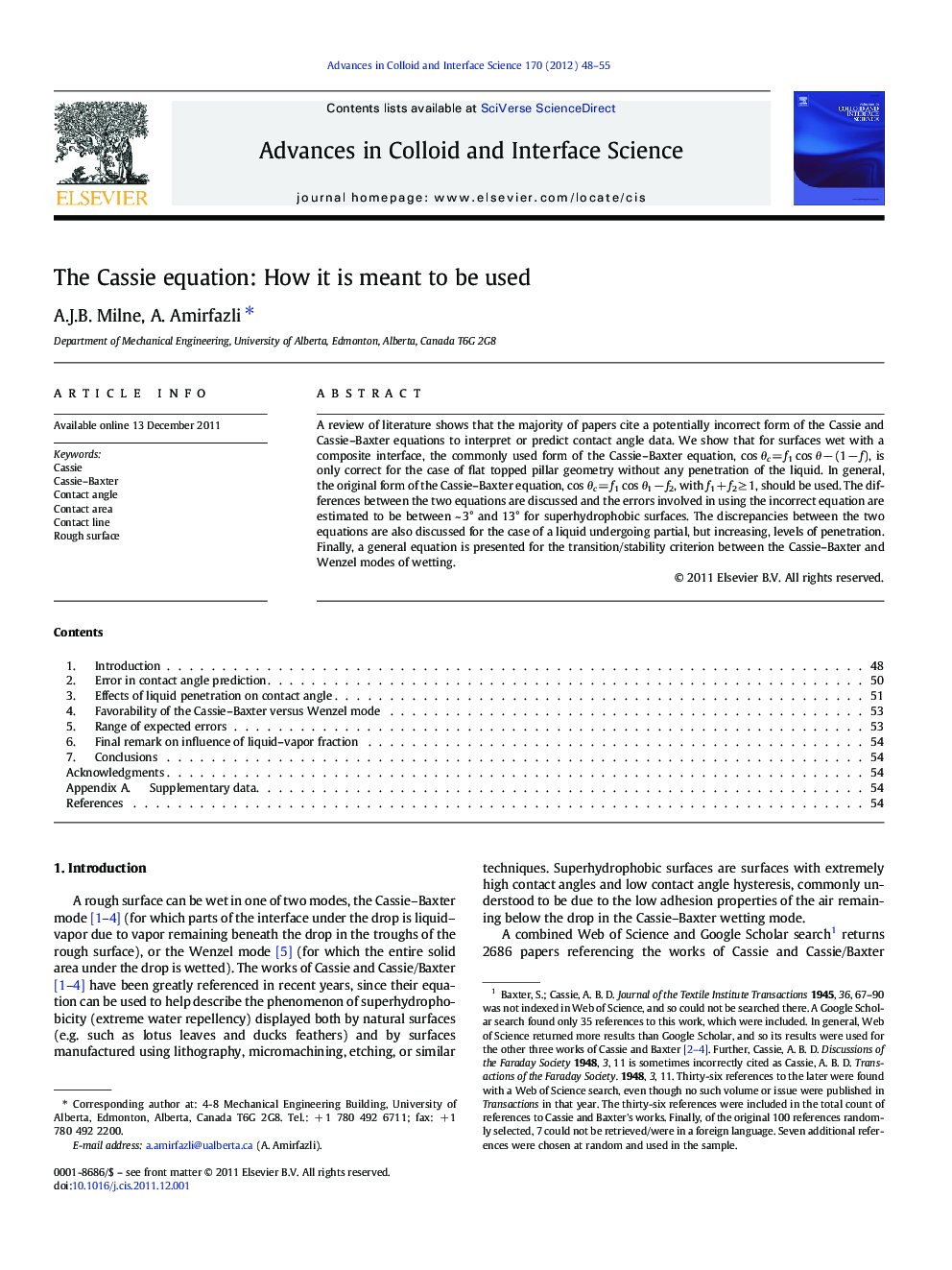| Article ID | Journal | Published Year | Pages | File Type |
|---|---|---|---|---|
| 590874 | Advances in Colloid and Interface Science | 2012 | 8 Pages |
A review of literature shows that the majority of papers cite a potentially incorrect form of the Cassie and Cassie–Baxter equations to interpret or predict contact angle data. We show that for surfaces wet with a composite interface, the commonly used form of the Cassie–Baxter equation, cos θc = f1 cos θ − (1 − f), is only correct for the case of flat topped pillar geometry without any penetration of the liquid. In general, the original form of the Cassie–Baxter equation, cos θc = f1 cos θ1 − f2, with f1 + f2 ≥ 1, should be used. The differences between the two equations are discussed and the errors involved in using the incorrect equation are estimated to be between ~ 3° and 13° for superhydrophobic surfaces. The discrepancies between the two equations are also discussed for the case of a liquid undergoing partial, but increasing, levels of penetration. Finally, a general equation is presented for the transition/stability criterion between the Cassie–Baxter and Wenzel modes of wetting.
Graphical abstractFigure optionsDownload full-size imageDownload as PowerPoint slideHighlights► cos θc = f cos θ − (1 − f) is a simplified form of the Cassie–Baxter equation. ► cos θc = f1 cos θ1 − f2 (with f1 + f2 ≥ 1) is the correct, full, Cassie–Baxter equation. ► A majority of papers incorrectly cite the simplified Cassie–Baxter equation. ► Neglecting solid–liquid and liquid–vapor roughness under-predicts contact angle by 3–13°. ► New and universal formulation to predict Cassie mode stability is provided.
